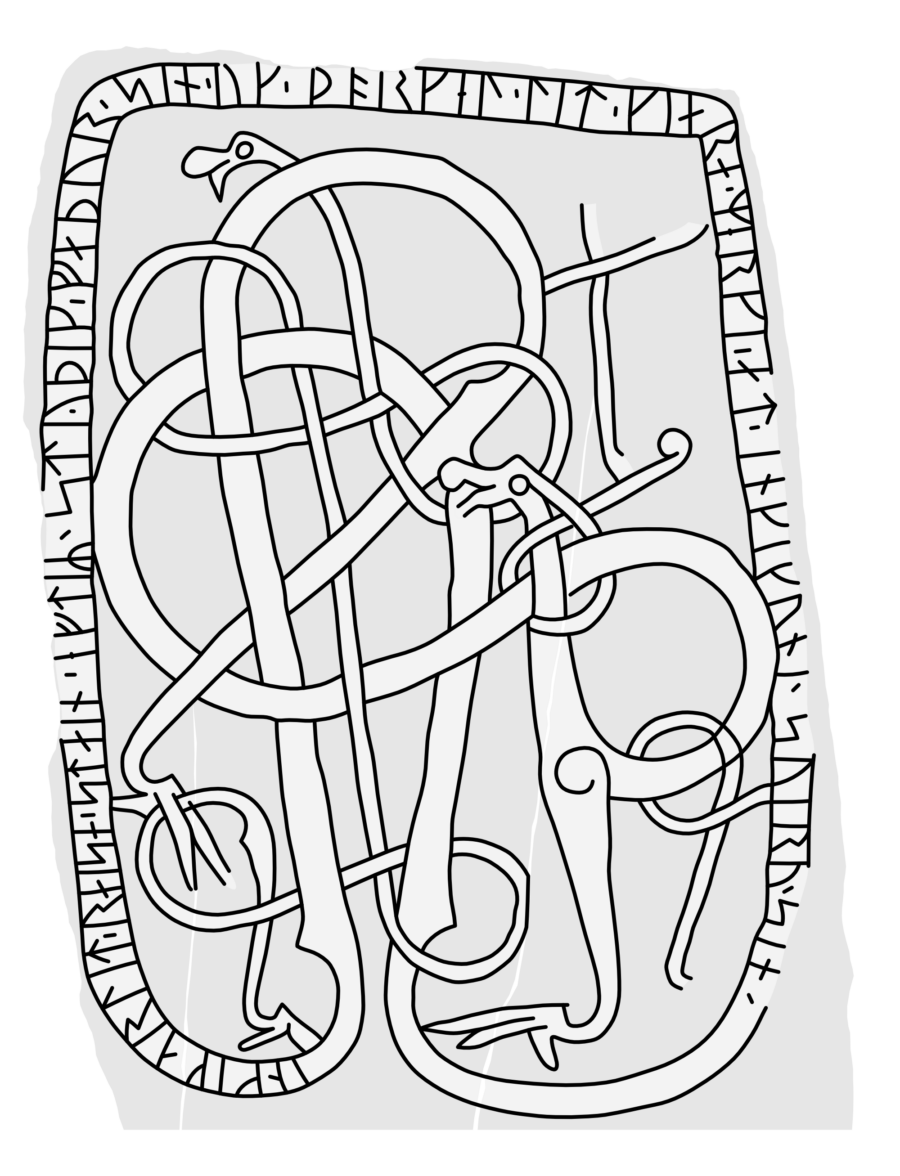
Runestone U 914
March 19, 2020
The carvings of the stone are in the runestone style Pr 5 (c. 1100-1130) pertaining to the late Urnes style.
Though the inscription is not signed, it is attributed to the runemaster Öpir for stylistic reasons.
The granite stone is c. 1,51 m tall and 1,12 m wide.
Runic inscription
The rune text begins at the tail end of the animal.
Runes
ᛁᚿᚴᛁᚴᛆᚱ ᛚᛁᛏ ‘ ᚱᛅᛁᛋᛅ ‘ ᛋᛏᛅᛁᚾ ‘ ᛂᚠᛏᛁᛦ ‘ ᛋᛏᚤᚦᛁᚴ ‘ ᚠᛅᚦᚢᚱ ‘ ᛋᛁᚾ ‘ ᚢᚴ ‘ ᚦᚭᚱᚴᛂᛚ ‘ ᛚᛁᛏ ‘ ᚴᛁᛅᚱᛅ ‘ ᛘᛂᚱᚴᛁ ‘ ᛅᛏ ‘ ᛁᚾᚴᛁᚴᚢᚾᛁ ‘ ᛋᚢᛁᚱᚢ ‘ ᛋᛁᚾ ‘
Transliteration
inkikar lit ‘ raisa ‘ stain ‘ eftiʀ ‘ styþik ‘ faþur ‘ sin ‘ uk ‘ þorkel ‘ lit ‘ kiara ‘ merki ‘ at ‘ inkikuni ‘ suiru ‘ sin ‘
Old Norse
Ingigærðr/Ingikarr let ræisa stæin æftiR Styðing/Støðing, faður sinn, ok Þorkell let gæra mærki at Ingigunni, sværu sina.
English
Ingigerðr/Ingikárr had the stone raised in memory of Styðingr/Stœðingr, her father; and Thorkell had the landmark made in memory of Ingigunn, his mother-in-law.
Notes
Thorkell and Ingigerðr must have been married, and the stone must have been raised in memory of her parents. But, the word ‘parents’ didn’t exist in the Old Norse vocabulary, which explains the weird and ambiguous phrasing of the memorial inscription.
———
Ströja, Uppland, Sweden
U 914